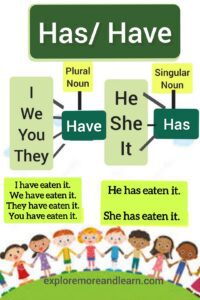The Present Perfect Tense is a verb form that describes an action that started in the past and continues up to the present moment, or an action that happened at an unspecified time in the past but has a connection to the present. In this post you will learn all the rules to form sentences in Present Perfect Tense with Examples.
Formation:
- Subject + have/has + past participle (verb-ed/verb-en)
Examples:
- I have studied English.
- She has travelled to many countries.
- They have lived here for 10 years.
- He has already eaten breakfast.
- We have been waiting for an hour.
Key points:
- Use “have” with I, you, we, they.
- Use “has” with he, she, it.
- Use past participle (verb-ed/verb-en) form.
- Indicates ongoing or completed action with present relevance.
Common uses:
- Experience: “I have traveled to many countries.”
- Duration: “They have lived here for 10 years.”
- Completed action with present result: “She has already eaten breakfast.”
- Recent past: “I have just finished my homework.”
- Unspecified time: “He has read that book.”
Signal words to be Used
- Already
- Just
- Ever
- Never
- Since
- For
- Recently
- Lately
Errors to avoid:
- Using simple past instead of present perfect.
Example: “I did it” instead of “I have done it.” - Forgetting to use “have/has” before the past participle.
Practice exercises:
- Fill in the blanks: “I __ (study) English for three years.”
- Choose the correct form: “She __ (travel) to many countries.” (has travelled/has been travelling)
- She________ her work. (has finished/ had travelled)
